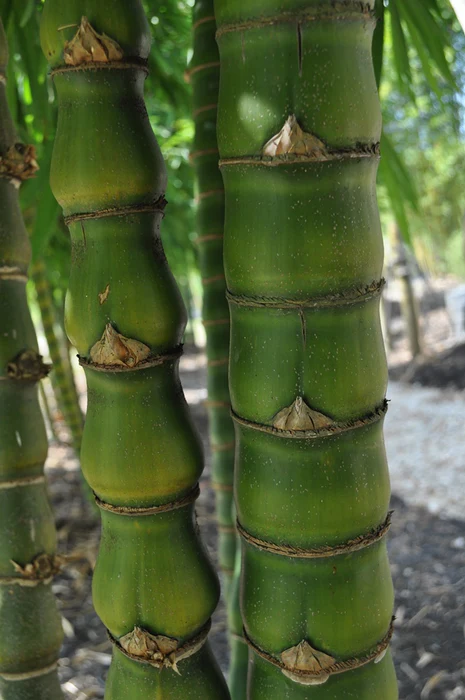
Buddha Belly Dwarf Bamboo
Buddha Belly Dwarf Bamboo (Bambusa vulgaris 'Wamin') is a distinct and popular bamboo variant, named for its unique, swollen internodes that resemble a Buddha’s belly. This bamboo's unique shape and growth pattern make it a sought-after specimen for gardens and landscapes. Here's a comprehensive guide to the cultivation and care of Buddha Belly Dwarf Bamboo:
Best Growing Environment:
Buddha Belly Dwarf Bamboo thrives in well-draining soil. It prefers loamy or sandy soil, but it can tolerate a variety of soil types as long as it has proper drainage. Soil pH should ideally be slightly acidic to neutral. Mulching around the base can aid in retaining moisture, suppress weeds, and provide some protection against temperature extremes.
Average Height:
While the typical Buddha Belly Bamboo can grow upwards of 40 to 50 feet, the dwarf variant usually caps its height at around 10 to 15 feet. This makes it suitable for smaller gardens or for use as a focal point in larger landscapes.
Growth Rate:
Buddha Belly Dwarf Bamboo has a moderate to fast growth rate. With optimal care, it can quickly form a dense cluster that serves as an aesthetic and functional addition to the garden.
Sun Requirements:
This bamboo variety does best in full sunlight but can tolerate partial shade. In very hot and sunny climates, some protection from intense afternoon sun can prevent potential leaf scorch.
Cold Hardiness:
Buddha Belly Dwarf Bamboo can withstand temperatures down to about 30°F (-1°C). In regions with cooler climates, it's a good idea to mulch heavily around the base to provide additional winter protection.
Water Requirements:
During its establishment phase, regular watering is crucial. Once mature, the bamboo can handle occasional drought, but it's always best to maintain consistent moisture levels, especially during hot, dry spells.
Detailed Fertilizing Guide:
- Spring: Start with a balanced slow-release fertilizer, like a 14-14-14 blend, to stimulate growth at the beginning of the growing season.
- Mid-Summer: If growth seems to slow down, a high nitrogen fertilizer, such as a 21-5-6 blend, can provide a mid-season boost.
- Autumn: A light application of a balanced fertilizer can help strengthen the bamboo for the winter months.
- Winter: Generally, no fertilization is required during this period. When you do fertilize, ensure you water adequately to reduce the risk of root burn.
Planting Guide:
- Site Selection: Choose a location with good drainage to prevent potential root rot.
- Planting Hole: The hole should be about twice the width of the bamboo’s root ball and of similar depth.
- Positioning: Ensure the top of the root ball is level with the ground.
- Backfill: Refill the hole, patting down the soil gently to eliminate air pockets. Water the bamboo generously post-planting.
USDA Zone:
Buddha Belly Dwarf Bamboo is suitable for USDA zones 9 to 11. Within these zones, it can flourish and become a captivating addition to various garden designs.
In conclusion, Bambusa vulgaris 'Wamin', or Buddha Belly Dwarf Bamboo, offers a mix of aesthetic appeal and ease of care. Its distinct appearance, combined with the benefits of bamboo, provides an intriguing visual interest to gardens and landscapes.

